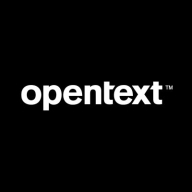

PTC Integrity and OpenText Application Quality Management are competing solutions in the software development lifecycle management category. OpenText Application Quality Management gains an upper hand with its extensive features geared towards comprehensive application quality management.
Features: PTC Integrity offers valuable features such as customizable workflows, integration with various development tools, and strong configuration management. OpenText Application Quality Management provides extensive test management functionalities, comprehensive reporting tools, and excellent automation support.
Room for Improvement: PTC Integrity may benefit from enhanced automation capabilities and improved reporting tools. It could also explore greater flexibility in deployment options to match industry standards. OpenText Application Quality Management could improve by enhancing integration capabilities with a broader range of development tools and streamlining its user interface for better usability. Additionally, refining workflow customization could be beneficial.
Ease of Deployment and Customer Service: OpenText Application Quality Management supports both cloud and on-premises deployment models, along with strong customer service assistance. PTC Integrity is recognized for straightforward on-premises deployment, though it may require intensive configuration, and it provides solid customer service support but is limited in deployment flexibility.
Pricing and ROI: PTC Integrity generally incurs higher initial setup costs but delivers robust ROI via effective workflow management. Meanwhile, OpenText Application Quality Management might be costlier over time due to its comprehensive feature range, yet it offers substantial long-term value for businesses needing in-depth quality management and testing capabilities.
| Product | Market Share (%) |
|---|---|
| OpenText Application Quality Management | 4.5% |
| PTC Integrity | 4.2% |
| Other | 91.3% |


| Company Size | Count |
|---|---|
| Small Business | 39 |
| Midsize Enterprise | 32 |
| Large Enterprise | 161 |
| Company Size | Count |
|---|---|
| Small Business | 3 |
| Midsize Enterprise | 2 |
| Large Enterprise | 12 |
OpenText Application Quality Management offers centralized data management, traceability, and integration capabilities. It aids in handling requirements, test planning, and defect tracking while supporting both manual and automated testing. Challenges exist in deployment and browser compatibility.
Known for its robust reporting and flexibility, OpenText Application Quality Management is tailored for large organizations requiring a comprehensive solution supporting lifecycle coverage and seamless tool integration. Users can consolidate testing processes, manage requirements, and centralize reporting across manual and automated testing. While some face issues with project tracking, outdated interfaces, and limited browser compatibility beyond Internet Explorer, it remains widely used for regression and performance testing. Integration with tools like JIRA and support for tools such as UFT and ALM PC underscore its utility.
What are the key features of OpenText Application Quality Management?In industries such as finance and healthcare, OpenText Application Quality Management is implemented to ensure rigorous testing standards. It supports test case creation and execution, defect tracking, and requirements management. Integration with JIRA and performance testing tools make it suitable for organizations needing synchronized testing environments.
We monitor all Application Lifecycle Management (ALM) Suites reviews to prevent fraudulent reviews and keep review quality high. We do not post reviews by company employees or direct competitors. We validate each review for authenticity via cross-reference with LinkedIn, and personal follow-up with the reviewer when necessary.